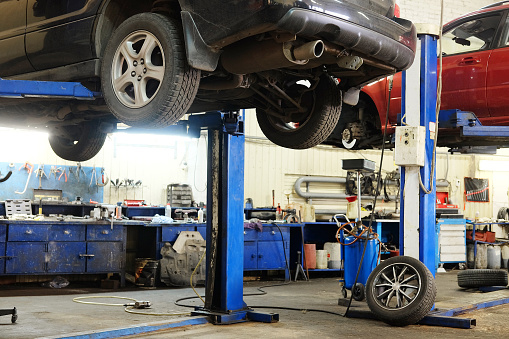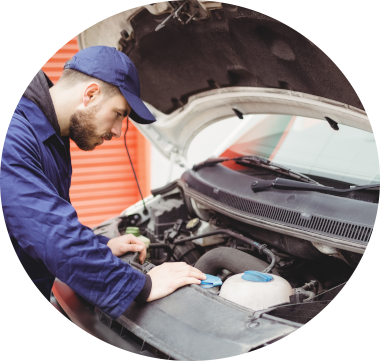All Categories
Featured

Two key solutions that are often neglected yet have a considerable influence on tire durability and performance are tire turning and positioning. Allow's dive into what tire rotation and placement are and why they're crucial for your vehicle.
What Is Tire Rotation? Tire rotation is the procedure of relocating your tires from one setting to another to ensure they use uniformly. Since your automobile's tires operate at different prices depending upon their setting (front tires versus rear tires), revolving them on a regular basis assists to disperse the wear evenly, bring about a much longer life-span for your tires.
Tires on the front axle have a tendency to wear quicker than those on the rear axle, specifically in front-wheel-drive automobiles, where the front tires deal with both guiding and power. On the various other hand, back tires might put on erratically relying on the automobile's weight distribution and driving problems. By turning your tires every 6,000 to 8,000 miles (or as suggested by the producer), you'll make certain an extra well balanced wear pattern.
What Is Tire Positioning? Tire positioning, also understood as wheel alignment, describes readjusting the angles of your automobile's wheels to the manufacturer's specs. Proper placement makes sure that your tires are aiming in the ideal instructions, and it helps make best use of tire life and enhance lorry handling. There are three main elements of placement: camber, wheel, and toe.
Camber refers to the tilt of the tires from the front of the vehicle. If your tires are tilted way too much inward or external, it can trigger irregular wear. Wheel describes the angle of the guiding axis when checked out from the side of the auto. This influences the stability of the steering, especially when driving directly. Toe describes the angle at which the tires point inward or exterior when seen from above. This affects just how your car tracks on the roadway. A proper placement makes sure that all 4 tires are pointing straight ahead and are tilted appropriately. Misalignment can result from striking splits, visuals, or merely from the wear of suspension elements gradually.
Why Tire Turning and Placement Matter. Extended Tire Life. Both tire turning and placement assistance avoid irregular tire wear. When your tires wear evenly, they last much longer, which can conserve you cash in the future by minimizing the requirement for premature substitutes.
Improved Safety. Proper tire rotation and alignment boost automobile stability and handling. Misaligned tires or unevenly used tires can adversely affect your ability to guide and quit your vehicle, especially in emergency situation situations. Routine upkeep ensures your tires perform ideally, giving a safer driving experience.
Better Gas Effectiveness. If your tires are not lined up appropriately, they may drag against the road surface area, triggering resistance. This additional rubbing can decrease gas efficiency, causing your car to eat more gas. Routine tire alignment guarantees that your vehicle moves efficiently, improving gas mileage.
Improved Comfort. Imbalance or unevenly worn tires can result in a rougher trip, as your automobile may draw away or trigger resonances. By keeping your tires revolved and lined up, you'll delight in a smoother and much more comfortable driving experience.
Indicators That Your Tires Need Rotation or Placement. It's important to remain sharp for any type of signs that your tires need turning or positioning. Watch out for these usual signs:
Uneven Tire Wear: If you discover that one tire is substantially a lot more worn than the others, it may be time for a turning or alignment. Steering Pull: If your cars and truck draws away while driving straight, this could suggest imbalance. Resonances: If you really feel resonances in the guiding wheel or the automobile itself, it can be a sign of misalignment or irregular tire wear. Squealing Tires: Unusual tire noise might likewise suggest incorrect positioning or the need for a tire turning. Just how Typically Should You Rotate and Straighten Your Tires? Tire rotation need to usually be done every 6,000 to 8,000 miles or as specified in your automobile's owner's guidebook. It's a good concept to revolve your tires during every oil modification, as this will certainly assist you remain on top of routine upkeep.
When it comes to alignment, it doesn't need as regular solution. Commonly, placement ought to be inspected at the very least yearly or whenever you observe problems like drawing to one side or resonance. You may also need positioning if you have actually struck a large crater or visual, which can toss your wheels out of alignment.
Conclusion: Keep Your Tires in Top Forming. Tire turning and positioning are essential services that keep your lorry running smoothly, safely, and successfully. By taking the time to have your tires revolved and aligned regularly, you're investing in your automobile's performance and long life, while also improving your safety on the road. Remain aggressive with tire upkeep, and your car will thank you with better fuel economic situation, boosted handling, and extended tire life.
Latest Posts
Contact Us: Reach Out for Trusted Auto Repair & Service in Montclare
Montclare Auto Repair: A Reliable Auto Service Provider in Montclare
Boost Your Building with Automatic Gates from Washington Fence
More
Latest Posts
Contact Us: Reach Out for Trusted Auto Repair & Service in Montclare
Montclare Auto Repair: A Reliable Auto Service Provider in Montclare
Boost Your Building with Automatic Gates from Washington Fence
